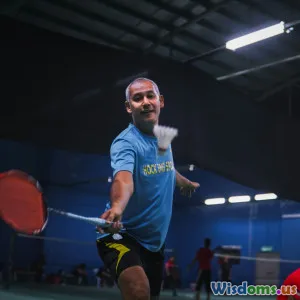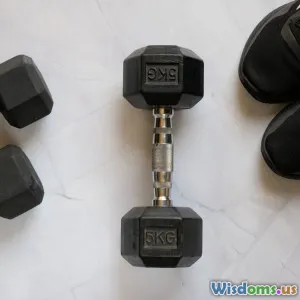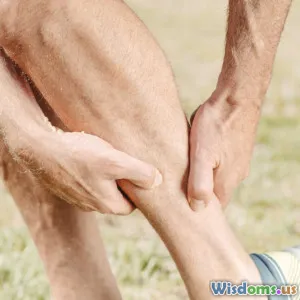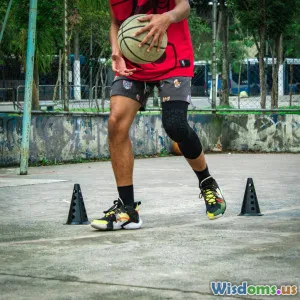
Basketball Agility Ladder Drills You Should Try Today
21 min read Discover essential basketball agility ladder drills to boost footwork and on-court performance quickly and effectively. (0 Reviews)
Basketball Agility Ladder Drills You Should Try Today
Basketball is a game defined by rapid change: a sudden cut, a defensive slide, a flash-fast drive to the basket. Traditional strength and cardio routines are foundational, but what turns good athletes into stars? The answer often lies in their agility—the precision with which they change direction, accelerate, and react. One of the most effective—and too often overlooked—training tools to boost these skillsets is the agility ladder. Practical, versatile, and deceptively challenging, ladder drills can elevate your footwork, balance, and game IQ in ways many players never consider.
Below, we break down a set of basketball-specific agility ladder drills that go far beyond rote footwork: each is designed to mimic in-game scenarios and build skills that translate directly to the court. This guide covers not just the how-to, but also the why—explaining how each drill will make you a sharper, more explosive player. Grab a ladder, lace up, and let’s break away from the pack.
Why Agility Ladder Drills Matter for Basketball
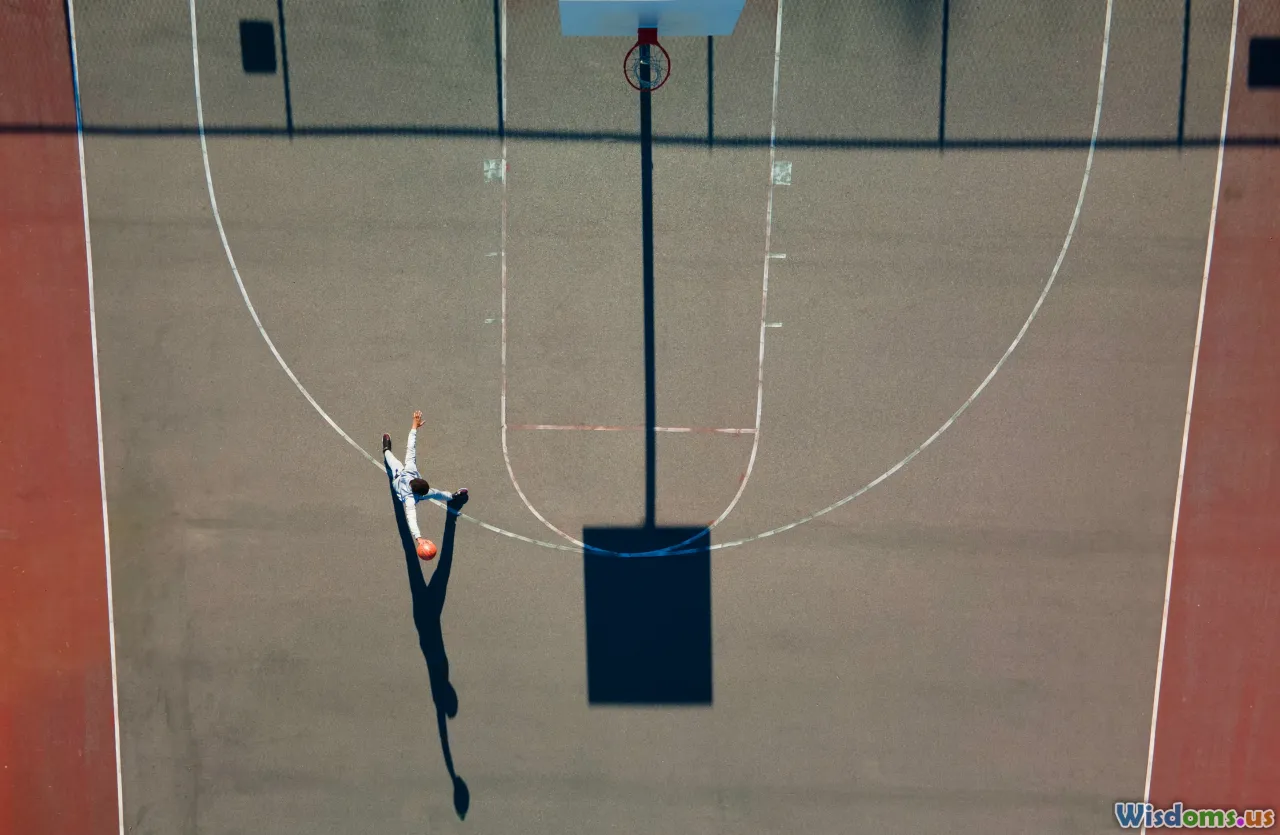
Basketball is multidimensional: it demands fast feet for defense, sharp body control during cuts, lightning-quick reactions on both ends, and rhythm in transition. Agility ladders challenge—simultaneously—coordination, speed, and balance. Here’s why that’s a game-changer:
- Reactive Movement: On defense or offense, success often comes down to how rapidly you change direction. Ladder drills simulate this with precise, repetitive steps—training muscle memory and teaching athletes to transition faster while maintaining posture and alignment.
- Court Application: Drills like the "Ickey Shuffle" echo in-game moves such as euro-steps, jab fakes, and motion cuts. Players get used to coordinated, multi-directional steps under pressure.
- Injury Prevention: Good footwork spreads force across the joints, reducing risk of ankle sprains or knee injuries. Ladder drills promote proper mechanics; repeated movement patterns help correct common faults that lead to tweaks and tears.
- Mental Focus: Agility work forces the brain to sync with the feet. Reading the ladder, responding rapidly, and staying in rhythm build mental stamina—critical for fourth-quarter execution.
Real-World Example: NBA veteran Chris Paul is renowned for his quick first step and plug-tight defense—often attributed to relentless focus on agility and footwork routines, including ladder drills, dating back to his Wake Forest days.
Essential Warm-Up Moves Before Ladder Work
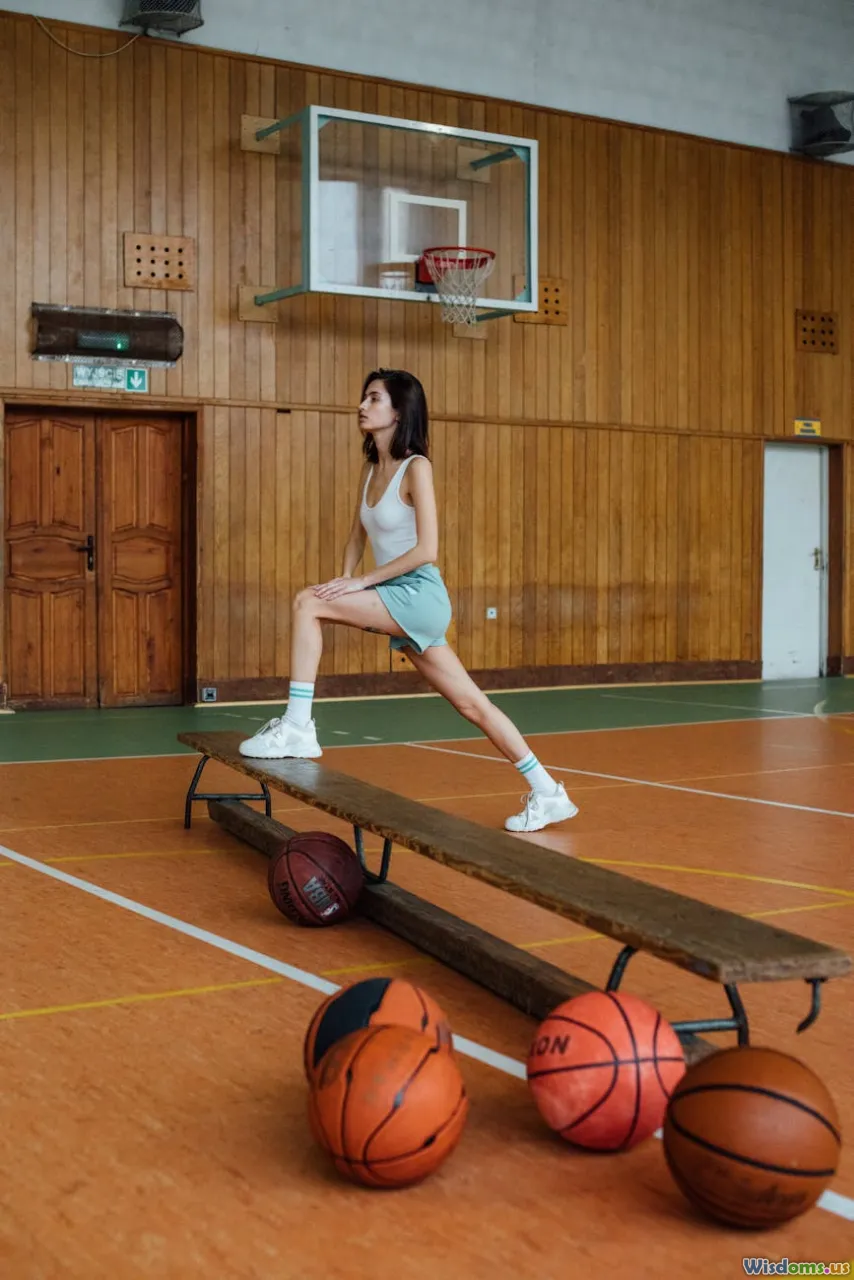
Before putting your best foot forward, prioritize warm-up exercises to prime your muscles and neural pathways. A proper warm-up reduces injury risk and boosts the quality of your ladder work.
Dynamic Warm-Up Routine:
- High Knees: 2 sets of 20 yards to activate hip flexors and core.
- Butt Kicks: 2 sets of 20 yards; loosens hamstrings and improves stride mechanics.
- Lateral Shuffles: 2 sets of 20 yards; mimics defensive slides, wakes up adductors and abductors.
- Leg Swings: Forward/backward and lateral, 10 reps per leg to prep ankle, knee, and hip mobility.
- Standing Ankle Pops: Rapid heel raise and drop, 20 reps, to prep for plyometric footwork.
Tip: If the gym floor supports it, incorporate ball-handling during the last few warm-up moves. Dribble as you shuffle, preparing body and mind for multi-tasking—a constant during live games.
Agility Ladder Drill #1: The Ickey Shuffle
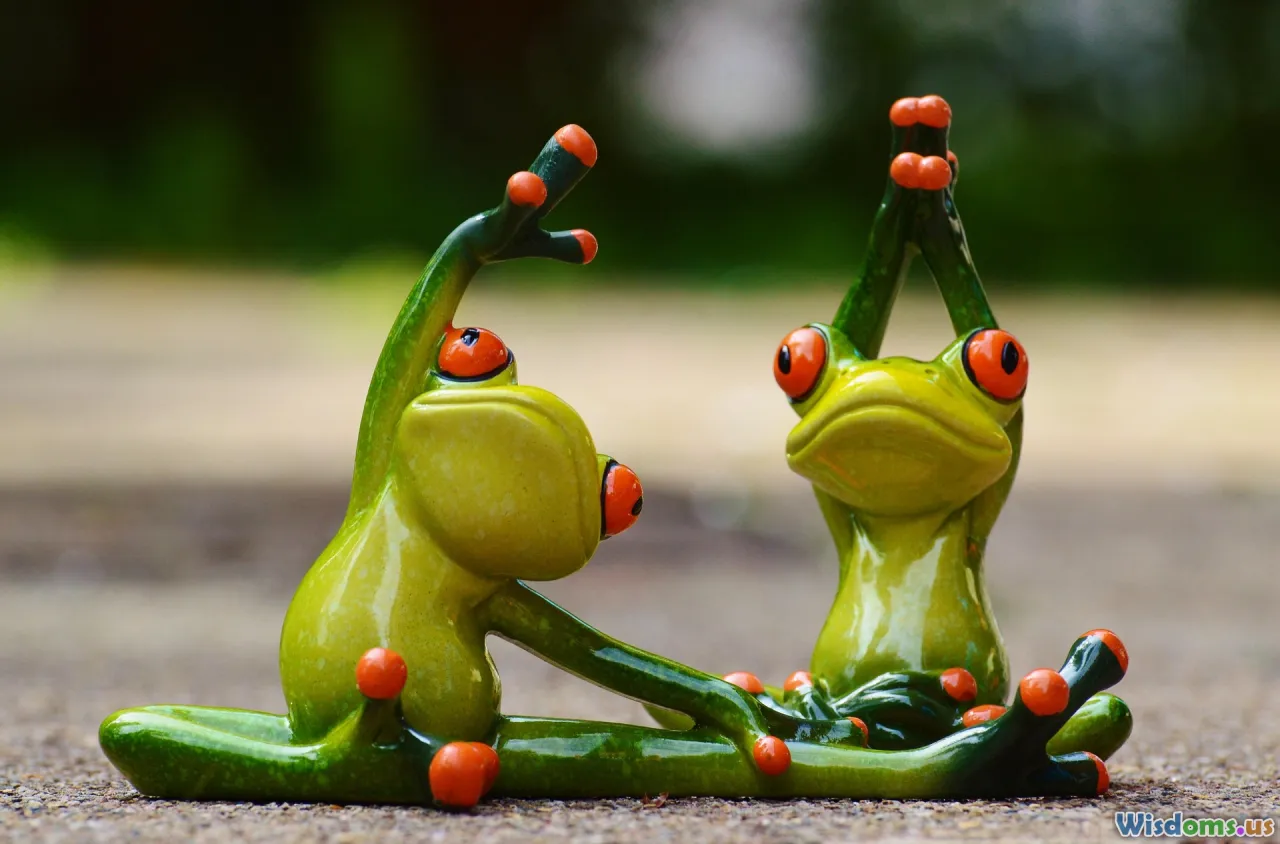
The Ickey Shuffle is a classic agility drill for a reason—it mirrors the kind of multi-step shifts seen in high-intensity basketball drives.
How-To:
- Stand at one end of the ladder, facing down its length.
- Step your right foot into the first box, then your left, so both feet are in the first square (1–2 step).
- Step your right foot outside the right ladder rail from the first box, immediately followed by your left foot moving into the next box, right foot joins inside, then left foot out to the left side.
- Think: In-In-Out pattern, moving quickly and smoothly down the length.
Basketball Application:
- Mirrors the motion of attacking a defender with rapid changes in stance; especially valuable when working on off-the-dribble drives and hesitation moves.
Coaching Tip: Keep your chest up and arms slightly bent, ready to catch a ball or react to a coach’s cue mid-drill.
Intensity Twist: Progress by dribbling a basketball as you move. Or, have a coach toss passes at intervals to practice catching out of a shuffle.
Agility Ladder Drill #2: Lateral In-and-Outs

Strong defenders never lose balance as opponents change directions. The Lateral In-and-Out drill is vital for players aiming for standout defense.
How-To:
- Stand parallel to the ladder at one end, knees bent in an athletic defensive stance.
- Step both feet together into the first box (in), then both feet step outside the ladder on the other side (out)—keep your stance low.
- Repeat this in-and-out sequence moving laterally down the ladder.
Basketball Application:
- Directly mimics shuffle slides when shadowing an opponent.
- Reinforces hip engagement, upright chest, and rapid feet—the building blocks of lock-down defense.
Advanced Variation: Hold a medicine ball or wear a resistance band around your ankles for added challenge. Increase speed in subsequent sets.
Analysis: Top defenders such as Jrue Holiday are renowned for discipline in space. Ladder work like this builds muscle memory not just for speed, but accountable, repeatable mechanics under pressure.
Agility Ladder Drill #3: Forward-Backward Sprints
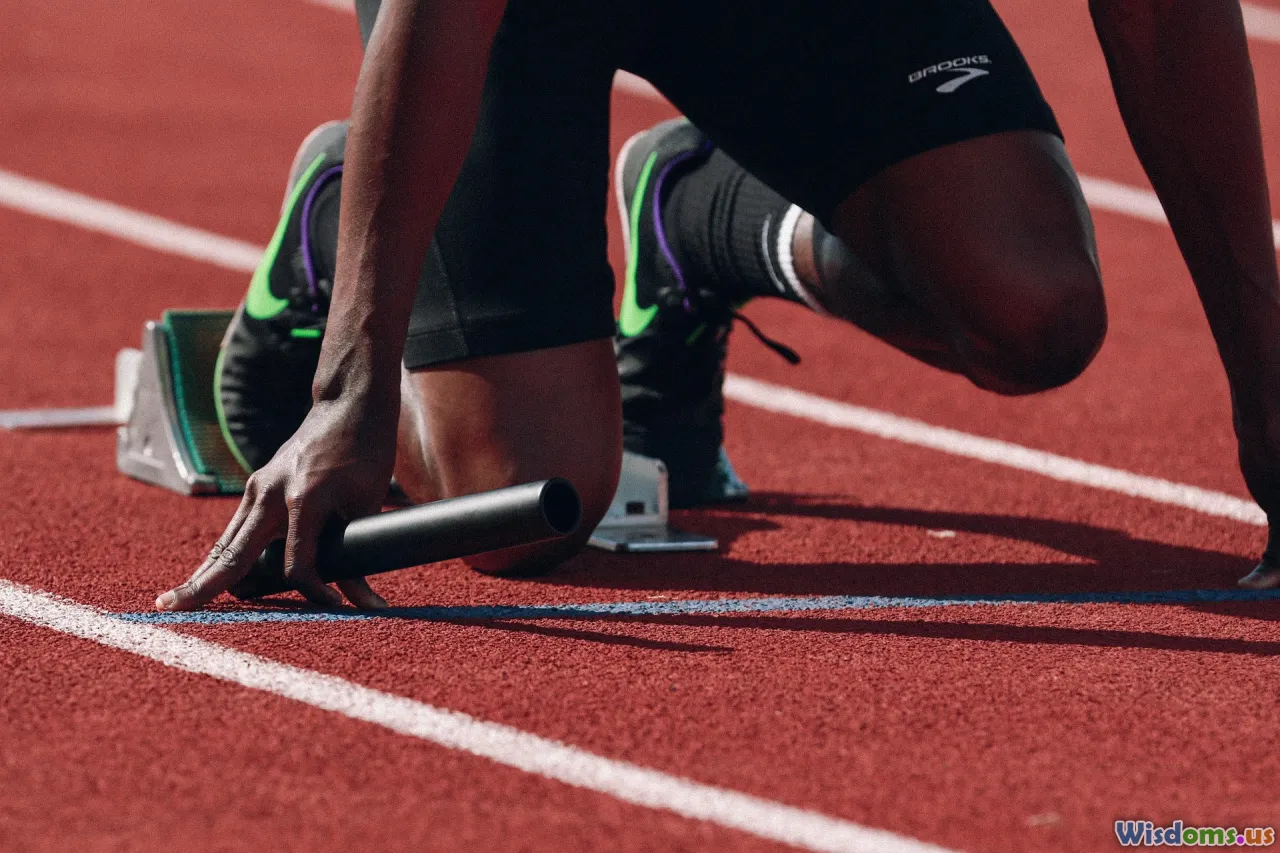
Basketball is relentlessly transitional—think offense that snaps into defense. Practicing explosive forward and backward transitions is crucial for mastering both ends of the floor.
How-To:
- Stand at one end of the ladder, facing down its length.
- Step both feet into box 1, sprint forward two boxes, then shuffle backward one box—all while staying on your toes and balanced.
- Continue this rhythm: two boxes forward, one backward, until you reach the end.
Court Connection:
- Replicates pressing up-court or recovering on defense after a missed rotation.
Practical Example: During a fast break, defenders are forced into explosive sprints and then retreat to contest a shot if beaten. Foley’s 2020 youth player study found a 15% improvement in recovery time after six weeks incorporating such drills.
Tip: For added basketball realism, add a coach or teammate with a ball, forcing you to finish the sequence with a shot contest or closeout.
Agility Ladder Drill #4: Two-In, Two-Out with Closeout

This drill challenges both your speed and ability to make an aggressive defensive closeout.
How-To:
- Face the ladder end-on.
- Rapidly step both feet into the first box (“two in”), then both feet out on either side (“two out”).
- Continue this pattern down the ladder; at the last box, explode out into a defensive closeout—hands up, wide stance.
Basketball Application:
- “Two in, two out” ingrains foot speed; the explosive finish mirrors running out to contest a shot.
- Develops habits to get hand-in-face on shooters and stay down on pump fakes.
Coaching Twist: Have a teammate pump-fake at the closeout, forcing a reaction—do you stay low or bite? Great for sharpening in-game reads and trust in footwork.
Agility Ladder Drill #5: Lateral Carioca Steps

The carioca, commonly known as the grapevine, promotes hip flexibility and cross-date movement—crucial for blending stability with swag on offense.
How-To:
- Stand sideways at the base of the ladder.
- Cross your left foot over your right and into the ladder’s next box; follow with your right, then cross left behind right to the following box.
- Repeat, moving laterally. Focus on hip rotation, keeping arms relaxed and cutting across your body.
Basketball Application:
- Strengthens your ability to execute euro-steps, cross steps, and pivots without crossing your feet dangerously during live play.
- Encourages hips to stay open when rotating in defensive sets.
Player Example: Watch video of Manu Ginóbili—his signature sidestep layups look much like ladder carioca steps, showing real-life translation.
Integrating Ball Handling with Ladder Work
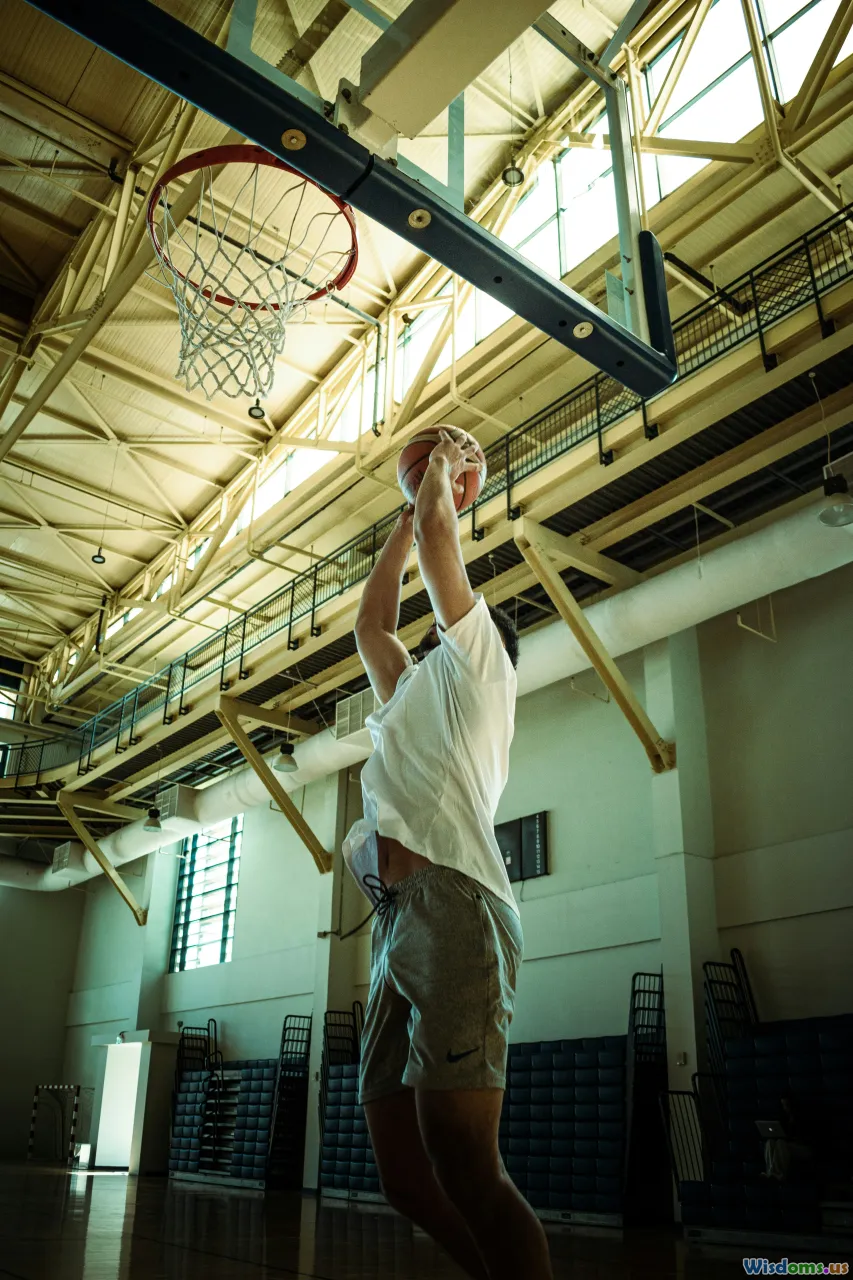
Basketball IQ isn’t just about the feet or the hands—it’s the synergy between the two. Adding the ball into your agility work bridges this gap.
Actionable Tips:
- Single Ball Dribble Drills: Perform Ickey Shuffle or Two-In, Two-Out with a ball. Dribble low and controlled as you move through the ladder. This sharpens handle as fatigue rises.
- Double Ball Dribble: For advanced athletes, use two balls—the coordination must scale up, mirroring game-like chaos.
- Coach-Monitored Triggers: Have a partner call out switch-ups (cross-over, behind-the-back, hesitation) at random intervals as you snake through the ladder.
Insight: Engaging ball and feet together multiplies the difficulty and cognitive demand—it simulates real games, where ball control matters under duress.
Tip: Film yourself. Slow-motion review can reveal off-balance moments or extra steps to refine further.
Ladder Drills for Building Explosive First-Step Speed
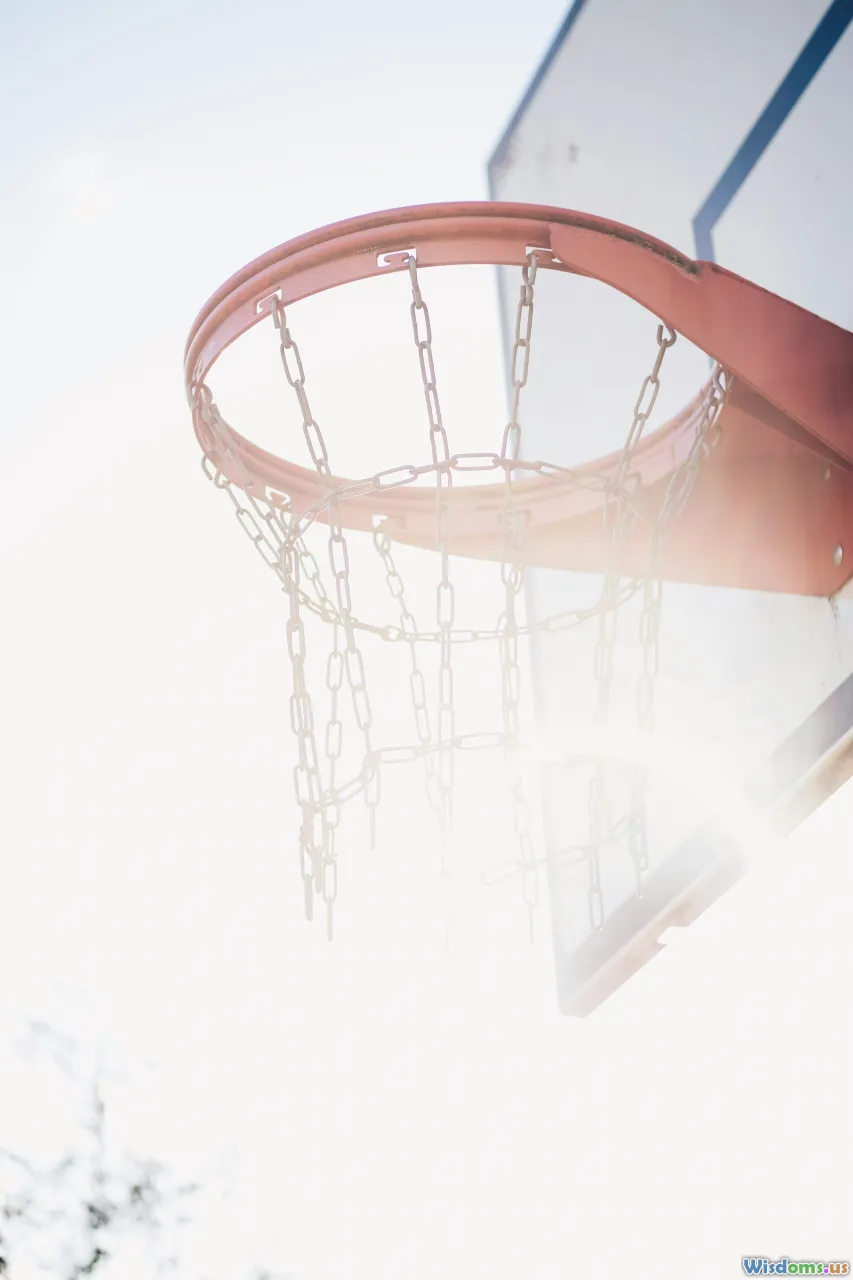
In basketball, the first step often makes the difference between coverage and open court. Quick-twitch moves off the agility ladder can help unlock this key skill.
Drill Example: Lateral Ladder Sprint-Finishes
- Perform any ladder drill down the ladder.
- At the end, explode laterally for one giant step (simulate cutting past a defender) into a short full-speed sprint—they can be to a chair, cone, or even a real basket.
- Repeat for both sides, emphasizing a hard plant and stop at the finish.
Why It Matters:
- Players like Kyrie Irving credit their "unstoppable first move" to hours of footwork and plyometric combinations—agility ladders script that pattern, plus add a rebound or finish for game authenticity.
- Research published in the Journal of Strength and Conditioning Research (2021) found an 18% improvement in first-step acceleration following one month of integrated ladder-and-sprint intervals for high school guards.
Progression: Add dumbbells (light) for further resistance or finish each rep with a defensive closeout if training for defense.
Mistakes to Avoid When Using the Agility Ladder
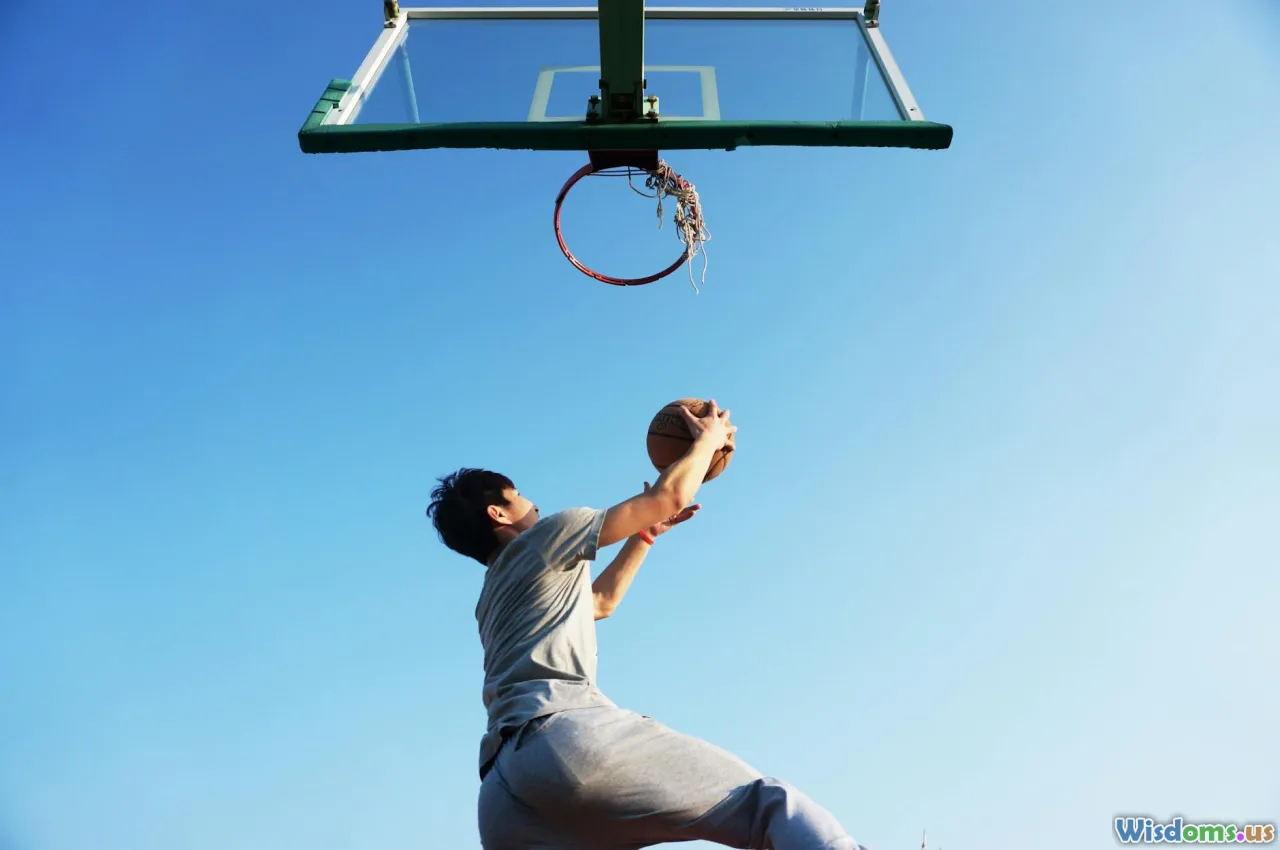
No tool is magic—the agility ladder is only as effective as its execution. Here are key errors to sidestep in your training:
- Overemphasizing Speed at the Expense of Form: Fast feet are nothing if not under control! Focus on short, crisp steps; quality always beats quantity.
- Standing Up Tall: Basketball is played low—you should always be in an athletic stance, knees bent, hips back. Standing upright compromises gains.
- Ignoring the Arms: Your arms anchor ball control, balance, and reaction. Don’t let them hang; keep elbows bent, ready for live play.
- Lack of Progression: Once you master basic steps, layer in ball handling, sprints, or resistance. Stagnation means lost potential.
- Skipping the Warm-Up: Cold muscles equal slow feet and higher injury risks. Even John Wall warms up before lightning through his ladder drills.
Pro Insight: Elite trainers recommend regular video analysis to catch patterns of sloppy movement and reinforce good habits.
Game-Ready Agility Ladder Workout Plan
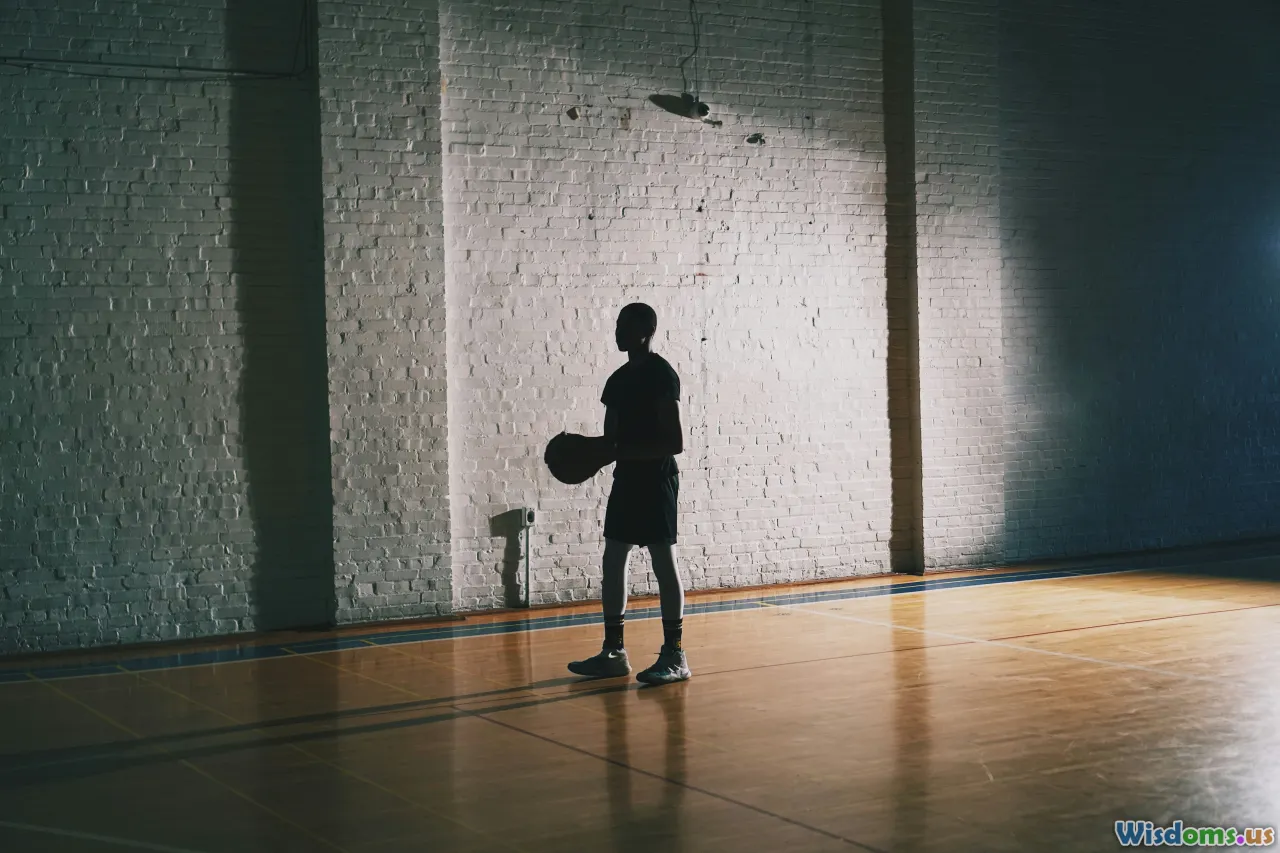
To turn these drills into real progress, consistency is key. Here’s an example agility ladder session for dedicated basketball players:
| Drill | Sets | Reps / Duration |
|---|---|---|
| Warm-Up Routine | 1 | 5 minutes |
| Ickey Shuffle (with ball) | 3 | Down & back |
| Lateral In-and-Outs | 3 | Down & back |
| Forward/Backward Sprints | 3 | Down & back |
| Two-In, Two-Out + Closeout | 2 | Down & closeout |
| Lateral Carioca steps | 2 | Down & back |
| Ladder drill + Sprint Finishes | 2 | Each side/rep |
| Ball-Handling Ladder Drill | 3 | 30s each |
| Cool Down & Static Stretch | 1 | 5 minutes |
Rest: Keep rest between sets at 45 seconds. If you’re newer, start with fewer sets—add volume as your agility and stamina improve.
Variation: For more advanced athletes, include reaction cues (coach/teammate claps, shouts), challenge drills in pairs for competition, or introduce light resistance via weighted vests.
Pro-Tip: Record baseline shuttle run and vertical jump times before starting a ladder routine; retest monthly. Most athletes see visible improvements in quickness and mobility in just 4–6 weeks when working agility ladders 2–3 times weekly.
Taking Basketball Footwork to the Next Level

The magic of the agility ladder is in its ability to make tough routines accessible anywhere—from school gyms to driveway courts. By layering these basketball-focused ladder drills with smart progressions, you create a system that hits every core asset of elite play: footwork, speed, mental sharpness, and in-game poise.
Basketball is evolving; stats show the game is faster, spacing is tighter, and every inch matters. Whether you’re a varsity hopeful, a passionate weekend warrior, or an AAU coach seeking to refine your squad’s edges, introducing agility ladder work can be transformative. Train purposefully, mix up your drills, emphasize quality, and you’ll step onto the court quicker, sharper, and more impactful than ever.
Set up the ladder, trust the process, and let your feet lead the way. The competition won’t know what hit them.
Rate the Post
User Reviews
Other posts in Sports Training & Performance
Popular Posts












